Have you ever had trouble determining whether the diaper you’re looking at is a rebrand or knockoff? This post has been in the works for quite some time, even before Misty Henry & I put together our webinar on this topic for the RDIA and I’m grateful to Elizabeth for putting together this list of things to look for when determining if a diaper is a black market or re-branded diaper. Please note: this is not intended to single out any particular brand, nor to condemn those who have knowingly or unknowingly purchased black market diapers. It is simply an aid for those consumers who want to know what they’re buying. Opinions are that of the guest poster and do not necessarily reflect those of Change-Diapers. Please also visit CleanDiapers.org to learn more about clean, safe diapers. There is also a list of reported, non-CPSIA compliant diapers available for RDIA members to view.
How to spot a ‘black market cloth diaper’
By: Elizabeth L.*
There’s been some buzz among cloth diapering communities about the need for a ‘definitive list’ of cloth diaper brands that can be described as “black market**” or “grey market***.” These cloth diapers can be problematic for several reasons, many of which have been covered here by Maria of Change-Diapers.com.
Moms and dads who are new to the cloth diaper world sometimes lack the context and distinctions to be able to spot a black market cloth diaper for what it is—to recognize a copied print, a stolen trademarked product name, a plagiarized website, or a brand that is willing to use illegal channels to export diapers into countries where they cannot legally be imported, potentially implicating the naive stateside importer in a crime that usually goes unnoticed and unprosecuted, but that CAN have serious consequences.
A list would be nice.
Unfortunately, it’s not possible to produce one.
The nature of these companies is such that their names change frequently, new ones crop up practically daily, and, frankly, pointing fingers at companies, even companies doing illegal things, can get a little old blogger in trouble.
Some of these diapers come at an enticingly low price point. Sometimes, perhaps even more deplorably, they have been purchased by a label and are marketed as diapers that belong right alongside legitimate industry brands at standard industry price points!
So this is what I’m going to do: I’m going to help you train your eye to spot them at any price point.
There are a few different tip-offs you can learn to look for:
1) The brand is not carried by any retailers you know about.
If you can’t find the brand carried by any cloth diaper store, it could just be a Work-at-Home-Mom-made product. But if you can’t buy it from a retailer, but you CAN buy it directly from the manufacturer, on eBay and Amazon, on overseas-hosted marketplaces like AliExpress and Alibaba, and in co-ops… you’re probably looking at a black market brand.
Some of these brands, you will notice, are located in China or the Middle East. Their websites make that fairly clear. The products are usually not compliant with the CPSIA, or the Consumer Product Safety Improvement Act.
Some try desperately to look like they’re located in the US or Canada. They sell on Etsy, HyenaCart, eBay, and their own websites as well. The English is sometimes broken. They’ve been known to refer to a pocket diaper as an “AIO Cloth Diaper.”
Some are being sold by families located in the US or Canada and may have even convinced their local cloth diaper retailers or one or two consignment stores/baby boutiques with a small social media presence to carry their brand. We’ll talk a little more about these ‘rebrands’ and menu diapers later.
2) The diaper is not made by a major brand, but they look “almost exactly like them” or come in prints offered and actually designed by a major brand.
We’ve all seen bumGenius’s Lovelace on co-op pockets. We’ve seen GroVia’s Mod Flower, Nature, and Owls all over the place, even copied by a brand that IS carried by many US retailers. We’ve seen the newborn AIOs that look exactly like Kanga Care’s Li’l Joeys and the tiny covers that look just like Thirsties covers but run at any even lower price point and are offered by a company that claims to donate all proceeds to orphans in China. And sometimes it’s the total design of the diaper that’s stolen and then offered in a different color and print palette.
Nearly every major player in the cloth diaper industry has been “knocked off” at this point. These black market companies do have a finger on the pulse; they know what is popular. If it looks just like something you have seen in a cloth diaper store or on a cloth diaper retailer’s website, but the brand name doesn’t match what you saw, make a mental note: it probably fits into one of the categories of illegal activity associated with the black market diapers.
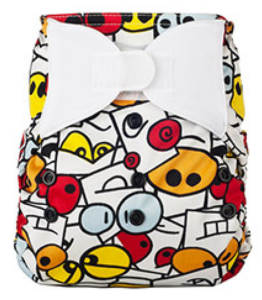
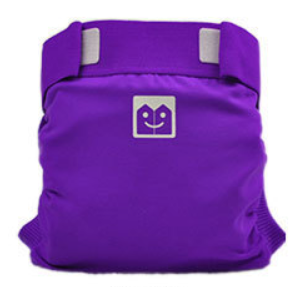
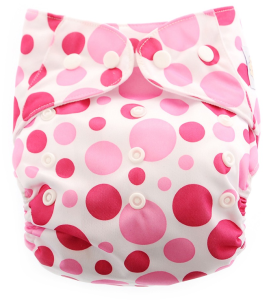
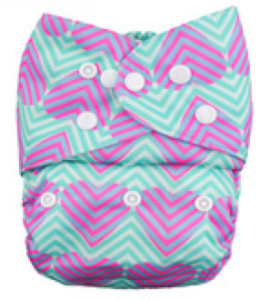
Menu diapers tend to have a bit of a generic look. Additionally, these brands seems to appear out of nowhere, aided by Facebook marketing and buyer co-ops, with several product offerings immediately available: all-in-two, all-in-one, and pocket diapers, wipes, wet bags, wet/dry bags, travel wet bags, several types of absorbent inserts, disposable liners, and sometimes even teething jewelry, carriers, or nursing covers.
While it’s difficult to know whether these ‘menu diaper’ brands are maintaining CPSIA compliance, it is easy to see when they are clearly ripping off features of major brands, features which are offered to them a la carte by the copy-cat factories they are ordering from. Know that it is still illegal to import something into the US that violates a US-held patent.
5) Charcoal anything. In the past two or three years, you may have seen loads of claims about the wonders of a supposed miracle textile, ‘charcoal bamboo.’ Allegedly this form of bamboo rayon blended with microfiber and infused with nanoparticles of charcoal derived from the bamboo plant is trim, absorbent, bacteria-resistant, smell-proof, and safe to place next to a baby’s skin—even good for it because of the ‘nanotechnology.’ But the fact is: not a single US entity has tested it yet. That’s not to say it definitely wouldn’t pass CPSIA standards. It certainly might! But we don’t know that.
Beyond that, the Federal Trade Commission, who already has a field day with ANY goods sold in the US making the claim that bamboo rayon or viscose from bamboo is antimicrobial, antibacterial, or even a natural fiber at all, would not allow the marketing of the highly processed charcoal bamboo to include these as-yet-non-falsifiable claims.
6) Cartoon characters, film or book logos, official designs owned by organizations like Autism Speaks and the Susan G. Komen Foundation. If you want a Mickey Mouse cloth diaper, well, I’m afraid you’ll have to draw it on yourself. No cloth diaper brand has licensed Mickey (or Elsa). If a brand is redrawing and printing them on fabric and then using that fabric to create cloth diapers in a country that doesn’t respect the intellectual property rights of the artists and disregards the process for licensing registered artwork, those diapers are illegal to import. It’s a bummer. You just want to make your toddler smile with that Spiderman diaper! And, truthfully, will you be caught? Probably not. But it’s definitely not legal, and knowing it was imported illegally is a good tip-off that the diaper is also not safety tested.
Yes, you may see licensed cartoon prints in your local fabric store. That is because the companies who own those prints allow you to purchase them for personal use; the license purchased by the printer of the fabric extends to the consumer as long as the registered artwork is only sold to that consumer for his or her personal use. The minute the consumer accepts money for a product made with that printed fabric without having paid a license royalty, he or she is susceptible to being sued by the owner of that artwork. Worth the risk?

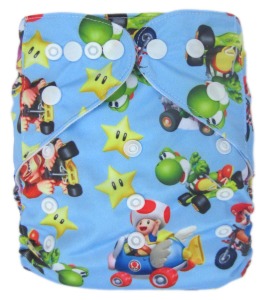
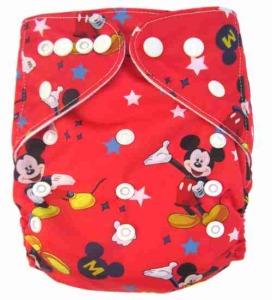
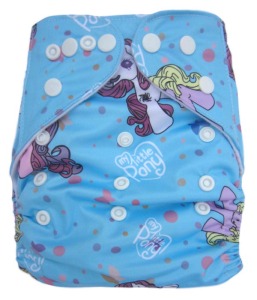
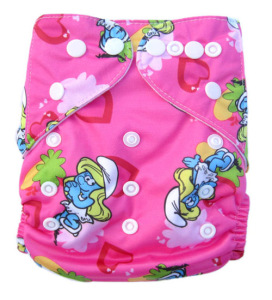
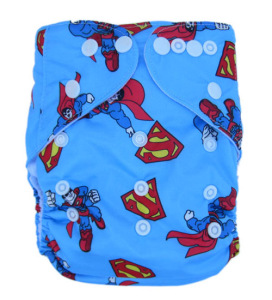
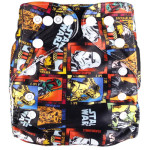
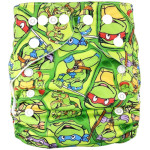
8) A million print options. Because of safety testing laws adopted by North American and many European countries, it is not easy or affordable for a legitimate industry cloth diaper manufacturer to offer more than a handful of prints at a time. If you have the option to choose from dozens or even hundreds of prints, or if the product has become available in dozens or hundreds of new prints the next time you take a look at the brand, it’s highly likely the brand is not even coming close to meeting the standards of safety testing required to be imported into the United States, Canada, the UK, or most other developed nations.
Does it matter?
I would argue that it does, but that’s another story for another guest post.
You may not care whether your baby’s cloth diapers are black or grey market diapers. Cool. You get to own your choices, absolutely. But if you’re hoping to develop a discerning eye toward all the offerings in this saturated marketplace, I hope this is a solid jumping-off point for you. It takes some time, but with a little effort, you can start to get a feel for how things are done in the industry vs. how things are done within the ‘underbelly.’
There’s a lot we don’t know about the underbelly—but there’s a lot that we can infer from those low, low price points (and even more we can infer from the price points of the rebrands). There’s a lot we DO know about the major industry brands who practice transparency and willingly undergo third party auditing to assure the consumer of their commitments to fair wages and fair treatment of employees, a green ethic from top to bottom, and to high quality materials.
The choice is yours. If you allow this list to circulate, more cloth diapering families can be empowered to make informed purchases.
*Elizabeth is a pen name. Given the strong feelings on this subject she preferred not to have her real name associated with this guest post.
**Black market: http://en.wikipedia.org/wiki/
***Grey market: http://en.wikipedia.org/wiki/
Thank you Elizabeth for putting this together, it is very helpful. Have you found any other “tip offs” to look for? I’d add “if it looks like a duck and quacks like a duck…” as well as “if it seems too good to be true, it probably is.”



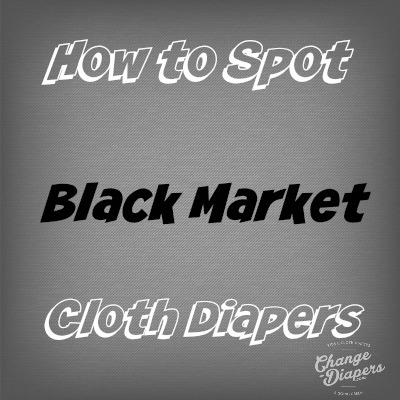
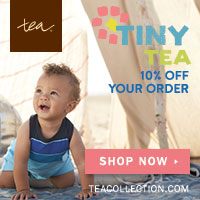



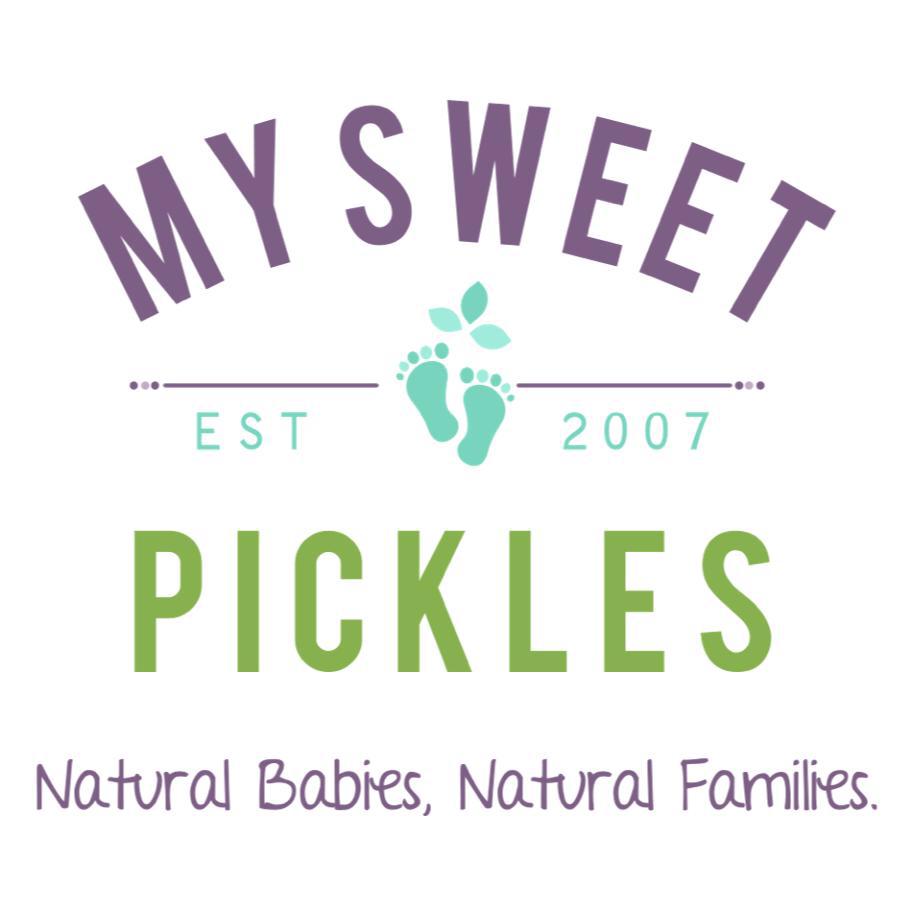
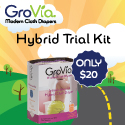
 Maria wants to live in a world where cloth diapers are the norm and moms can make parenting choices without judgement. When she’s not chasing her 18, 14 and 11-year old kids around, you might find her checking out the latest gadgets, organizing something (again) or exercising in the fresh air.
Maria wants to live in a world where cloth diapers are the norm and moms can make parenting choices without judgement. When she’s not chasing her 18, 14 and 11-year old kids around, you might find her checking out the latest gadgets, organizing something (again) or exercising in the fresh air. 







[…] so important to be an informed cloth diaper consumer. Here is a wonderful post to help you “Spot a Black Market Diaper.” Also there are many creative ways to save money with homemade diapers made from old […]
I agree with Liz, I got some super cheap knockoffs from craigslist and they have fallen apart. My flip and thirsties covers are holding up beautifully!
#9 – They don’t last much past one year. After nearly 4 yrs cloth diapering multiple babies, my “cheapies” have never lasted over a year. I wish I had just invested in all “real” diapers from the beginning. My Bum Genius and Blueberry diapers are all going strong after FOUR years!!!
Fabulous post! I’m pretty sure, though, that Bumkins does have a license since they’ve started selling Disney character diapers in conjunction with their Dr. Seuss line up. (And they were at ABC Expo, so I *think* they’d be 100% compliant.) But, yeah, it’s typically knock offs that have the character diapers. They don’t care about patents or copyright, so why wouldn’t they?
Yes Bumkins products are licensed!
Excellent information… very helpful! This is way I only buy from respectable retailers or known brands.
I will say the only thing I questio is the charcoal thing. Several Canadian brands do this and are legit.
I’m really not familiar with charcoal bamboo. The only CB I’ve used was from a legitimate Canadian brand I trust & respect. It seems to be common in co-ops.
I also reviewed a Canadian diaper with charcoal bamboo components, but Elizabeth’s comments above only applied to US entities, right? Which makes me curious about Rock-a-Bums – a US company (via SoftBums) that markets a charcoal bamboo insert.
I don’t know! I suspect it will be a matter of time before the FTC cracks down on charcoal bamboo claims as they did with “bamboo.”
^ Except that those co-ops aren’t selling the actual licensed artwork. They are selling illegally printed replicas and likenesses of characters the black market brand had no permission to draw and print to begin with.
The minute the consumer accepts money for a product made with that printed fabric without having paid a license royalty, he or she is susceptible to being sued by the owner of that artwork. Worth the risk?
This is, if a person makes a profit. Selling cut character fabric, at a discount or at cost (not for personal gain), they are not liable. Just like why it’s generally not necessary to pay taxes from garage sale earnings. Co-ops would be exempt, well, if they’re actual co-ops because they sold be selling exactly at cost.
If a co-op imports the product they are considered the “manufacturer” and have to comply with U.S. laws, including CPSIA requirements & patents/intellectual property.
Wonderfully written, Elizabeth, thank you! And thank you, Maria, for having this guest post!
Great question, Anne! I wonder the same thing. Thanks for this article, great information.
Quick question. You wrote ” The minute the consumer accepts money for a product made with that printed fabric without having paid a license royalty.” If a WAHM mom wants to sell a diaper she made with cartoon fabric personally purchased by her, how would she go about paying the royalties?
Years ago, I made hair bow holders, cards & wall hangings for friends & family. I often used Jolee (I think that’s the brand) scrapbooking pieces licensed by Disney.
I had people ask to purchase the things I was making, and I sent an email to Disney. They asked me questions about what I was making, where & how I’d be selling them, pricing, how many I expected to sell etc. and they granted me permission to use the scrapbooking pieces in items I was reselling.
I’d suggest the WAHMs contact whoever owns that intellectual property (Disney, NFL etc.)
The same applies for embroidery that they use/purchase. I know many people do it – I don’t think they realize what trouble it can cause for them – particularly if they’re not careful at disclaiming that it isn’t an official licensed xyz item.
That’s good to know! So sometimes just contacting them will do the trick, and you can have written permission on file without having to actually pay royalties?
Yes I believe so but it would really depend on how they were marketed & how much you were planning to sell. I was not doing much!